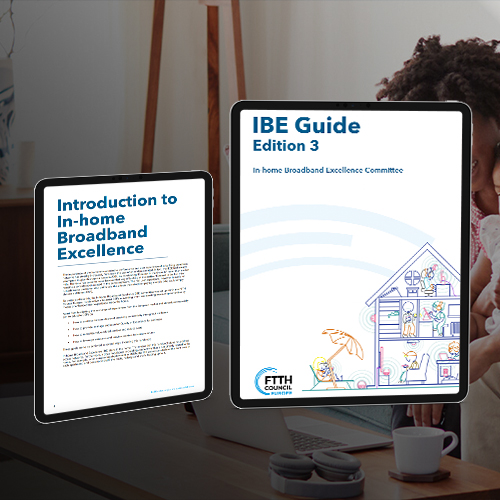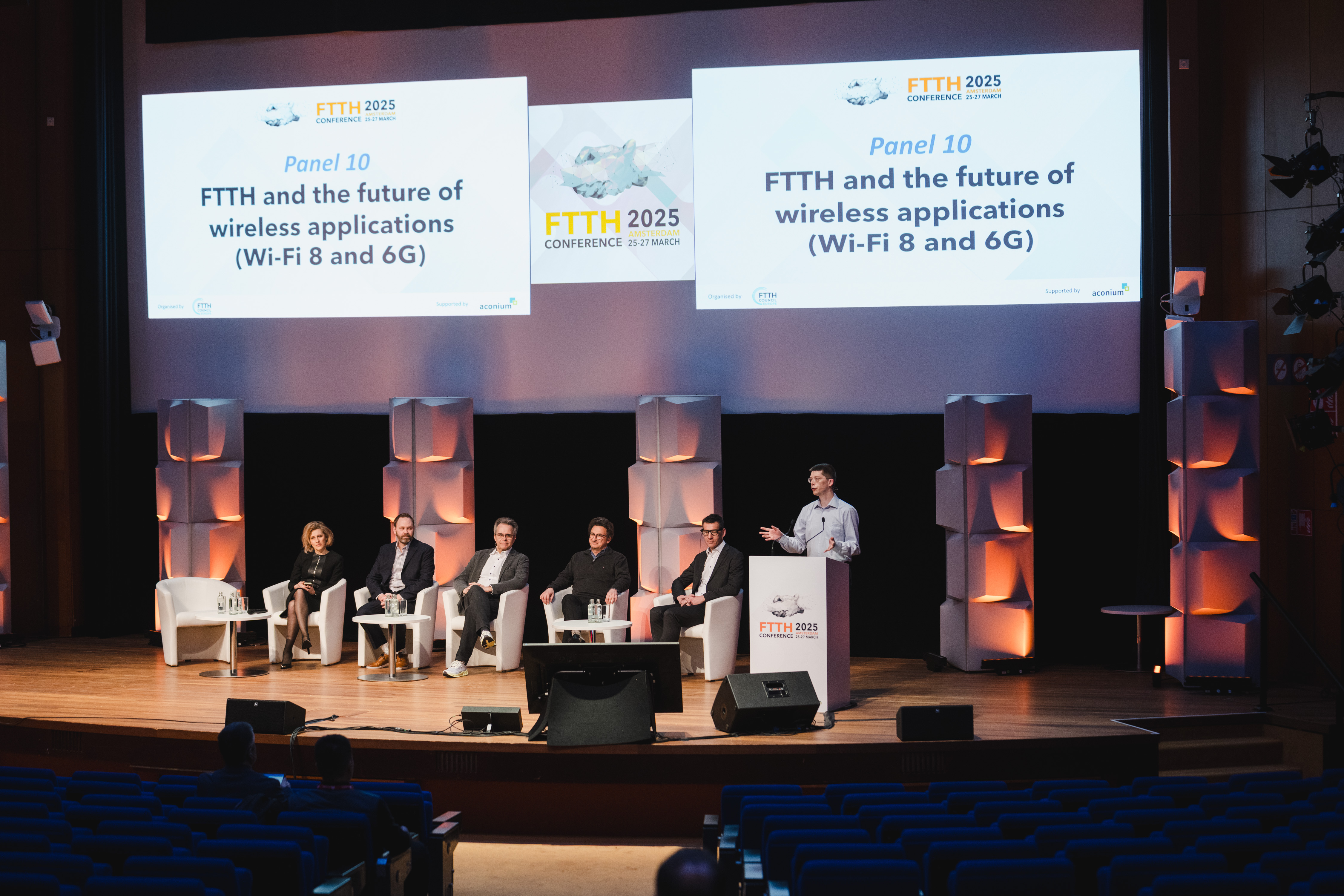Why is in-home broadband excellence strategically relevant for CSPs, and how does it relate to fibre network deployment strategies in the European Union?

As we saw at the FTTH Conference in March, fibre rollout is steadily continuing, but will need additional investment to close the remaining gap. This investment ultimately has to come from paying subscribers, but the adoption remains lagging. If the in-home broadband experience is not addressed well, subscribers will not be able to benefit from the inherent quality of the fibre connection, and they will not see the need to adopt it.
The fact that so many homes connected stay ‘unadopted’ is a serious threat to the future of a digital Europe where everyone should have access to Gigabit connectivity (and beyond). And delivering ‘In-Home Broadband Excellence’ is the answer to that threat.
In the picture on the left, action from the Panel 10 - FTTH and the future of wireless applications (Wi-Fi 8 and 6G) at the FTTH Conference 2025, in Amsterdam.
From the experience of your committee, what are the best practices to provide, manage and monitor the ‘Quality of Experience’ for end-users?
This is a tough question to answer. There are so many things to address, from the basic infrastructure in the home, to ensuring the CSP can manage that infrastructure to help the end-users where needed, to technologies to deploy new services for additional revenue, and indeed to unlock real subscriber value that can only be delivered over fibre efficiently. For this reason, we have just released the third edition of the IBE Guide, which addresses all these topics and more. For the first time, this edition also brings content for the technicians that do the in-home installation. Many service providers choose to send a technician, to have a human touch-point with the subscriber. However, ensuring the technicians are equipped to do a high quality installation requires additional knowledge and training compared to what is typically done today.
Perhaps my conclusion on the overall best practices is especially: adopt standards and technologies that already exist. We have a habit to quickly skip over to the next ‘silver bullet’ (for example the generative-AI hype currently ongoing), but we forget there are many things that we can do with available down-to-earth technology that are not yet even implemented in many networks to the fullest.
What are the key factors driving fibre adoption among consumers?

European consumers are typically very price conscious, and this can be an issue as fibre is not usually a cheaper subscription. But in my opinion Europeans aren’t adverse to paying for value. In the beginning, fibre deployments could be marketed locally in effective ways. But in the mass-market, if consumers don’t perceive they get more value out of the fibre connection than what they already have, they will be reluctant to switch, especially since fibre is unlikely to be a cheaper subscription for them.
Well implemented fibre networks are of high quality, and subscribers will know. As we still await growth of new consumer services that truly and honestly require fibre connectivity, quality of the network remains the key driving factor. And this can be best influenced by taking care during deployment and initial installation. This is exactly why the committee is now focused on providing more value to CSPs in that process.
In the picture on the left, action from the Panel 10 - FTTH and the future of wireless applications (Wi-Fi 8 and 6G) at the FTTH Conference 2025, in Amsterdam.
What new technologies or innovations is the committee exploring to enhance in-home broadband experiences?

We’ve just seen Wi-Fi 7 released, as a major upgrade to the quality of the in-home broadband experience. Of course it will take many years to fully mature and ‘trickle down’ into most end-user devices so it is something to continue monitoring and expanding on. On a related note, while mesh networking is not exactly ‘new’ anymore, it remains of interest to deploy it more effectively, perhaps coupled with other improvements to the (initial) in-home installation quality. The latter isn’t exactly a new technology or innovation in most senses of the word, but as I mentioned above, it could actually be one of the best ways to enhance the in-home broadband experience over the next few years. Hopefully Wi-Fi usage in the 6GHz band will be expanded in Europe as well, so that in a few years, we could finally say we have achieved the solution to In-home Broadband Excellence, once and for all. Of course we all know it’s not quite going to be like that, but we have something to aspire to, and we can certainly get a lot closer than where we are today!
In the picture on the right, Maarten Egmond is moderating the Panel 10 - FTTH and the future of wireless applications (Wi-Fi 8 and 6G) at the FTTH Conference 2025, in Amsterdam.